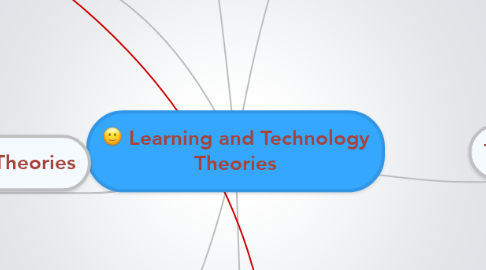Learning and Technology Theories
by Renee Loiseau


1. Learning Theories
2. Connectivism
2.1. Learning occurs as a result of social networking happening from several difference diverse connections and ties
2.2. Students learn from making NEW connections through various different types of PLN networks (Facebook, Twitter, Tumblr, podcasts, etc.)
2.3. Teachers guide students how to search for relevant, meaningful information
2.4. Teachers help students understand the differences between bad information and good information
2.5. Information is forever changing, what is right today may be wrong tomorrow
2.6. Teachers scaffold their students while they learn new material
3. Constructivism
3.1. Human learning is constructed
3.2. Learners build new knowledge from experience and the knowledge they already held
3.3. New experiences can change old understandings
3.4. Students become responsible for their own learning
3.5. All about collaboration, reflection, self-monitoring, articulation of ideas, conversing
3.6. Acceptance of others views
3.7. However, has been called the "elitist" theory, apparently more beneficial to those of higher privilege
3.8. Too much emphasis on "group think" instead of individuality
4. Cognitive Load
4.1. Explains the limits of working memory based on current knowledge
4.2. The rule of "7" People cannot typically remember more than + or - 7 items
4.3. Overload occurs when the working memory has to "think" too quickly
4.4. Best avoided through: Chunking information--finding the most important, relevant information and focusing on that. Repetition, repetition, repetition--
5. Technology Theories
5.1. SCOT
5.2. Social Construction of Technology
5.3. Technology does not determine human action
5.4. Human action determines technology
5.5. Explains how technology has arrived, but does not elaborate on the consequences technology has on society
5.6. Select social groups are those to choose what technology advances
5.7. Those of lower social economic class do not have a voice because they do not have the means to obtain new and current gadgets and devices
5.8. MEDIA TECHNOLOGY
5.9. Study of media environments
5.10. Idea that technology and techniques, modes of information and communication play a key role human affairs
5.11. Opposite to SCOT (humans determine technology)
6. TPACK
6.1. Teachers should hold three types of knowledge 1.Technological knowledge 2.Pedagogical knowledge 3.Content knowledge
6.2. What happens when all three overlap?
6.2.1. TPACK
6.3. Can possess more knowledge of one over another
6.4. I believe pedagogical to be most valuable
6.5. Context encircles the VEN diagram of TPACK
6.5.1. Context means is it appropriate for the class? (age, demographics, etc., need to be considered)
